I'm constantly amazed at digital photography.
Since I never did serious film photography, I'm not sure how film and digital relate, but the way it was told to me is that film photography is a chemical process.
It's all about how the light strikes the film, with each roll having a a particular chemical makeup. Even more chemicals are involved in the darkroom. It means that if you want to have complete control over your photos, you need to know what you're doing. You can still shoot good photos and have them professionally developed; however at that point you give up a lot of your creative choices.
Digital photography doesn't deal in chemicals, it deals in information. It's all 1s and 0s, like any computer program. And like so many computer programs, a lot of the information appears to be hidden, unless you know how to find it.
That's where photo manipulation in the computer comes into play.
Ideally, for the most information, you would shoot in a format known as Camera RAW. This pretty much bypasses most of your slick digital camera pre-sets (things like white balance, saturation, etc.). The drawback is that most RAW files are huge, so they slow your camera way down. Still, if you want to be able to extract the most information from your digital photograph, ideally it should be shot in RAW.
My Canon 7d shoots very quickly in RAW, but my iPhone 4s and my Canon SX40 shoot only in jpeg.
Jpegs don't have as much hidden information as photos shot in RAW, but there's still a lot more than you see when you download your picture to the computer.
So where is all this going? I want to encourage all you casual photographers to take a shot at playing with your pictures
Here's a shot I took of the small shelf in our bathroom. These are some of my very favorite things, and I take lots of pictures of them, always trying for the perfect shot.
This wasn't it.

Still, I wanted to see what I could do with it.
A bit of sharpening,
and a change in lighting for a hint more drama.
The difference can really be seen
if you click for a larger image.
And pardon the dust.
A bit of sharpening,
and a change in lighting for a hint more drama.
The difference can really be seen
if you click for a larger image.
And pardon the dust.
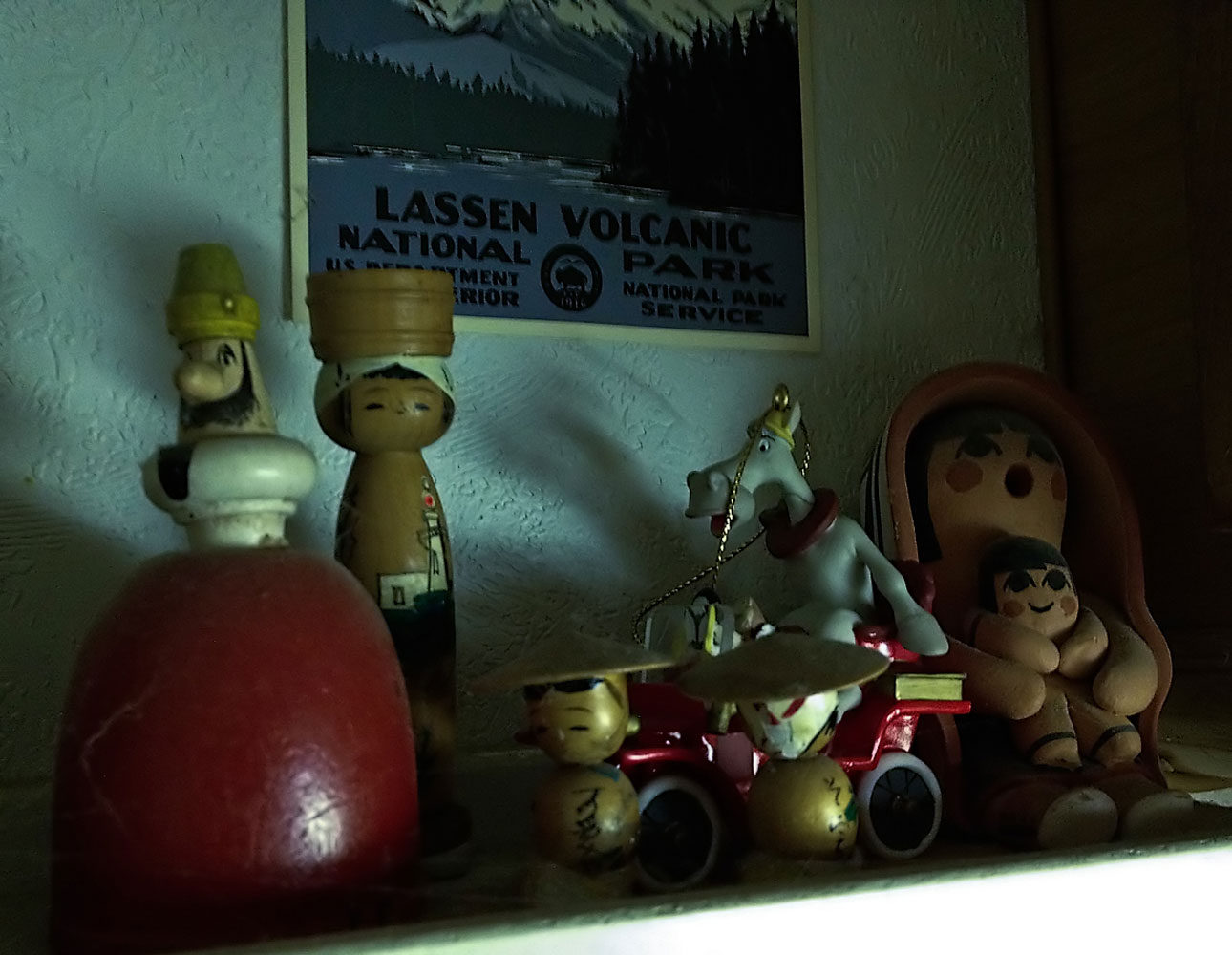
Later, around sunset,
I looked outside
and saw pink skies and a rising moon.
I looked outside
and saw pink skies and a rising moon.
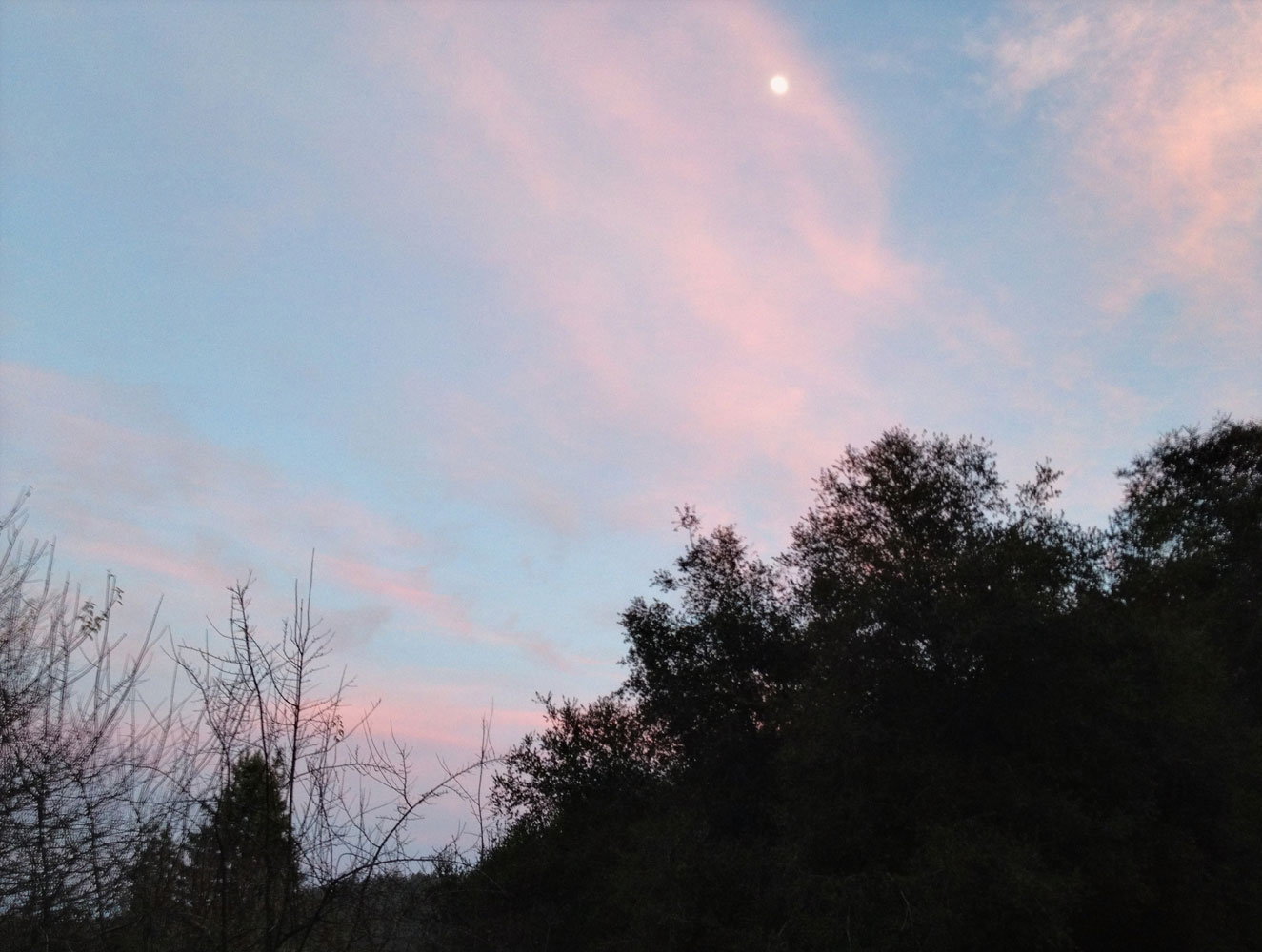
Now this bore absolutely no resemblance
to what my eyes were seeing.
I knew the camera had done better than this,
it just needed a bit of help.
A change in exposure brought this.
Not great but better.
Not great but better.
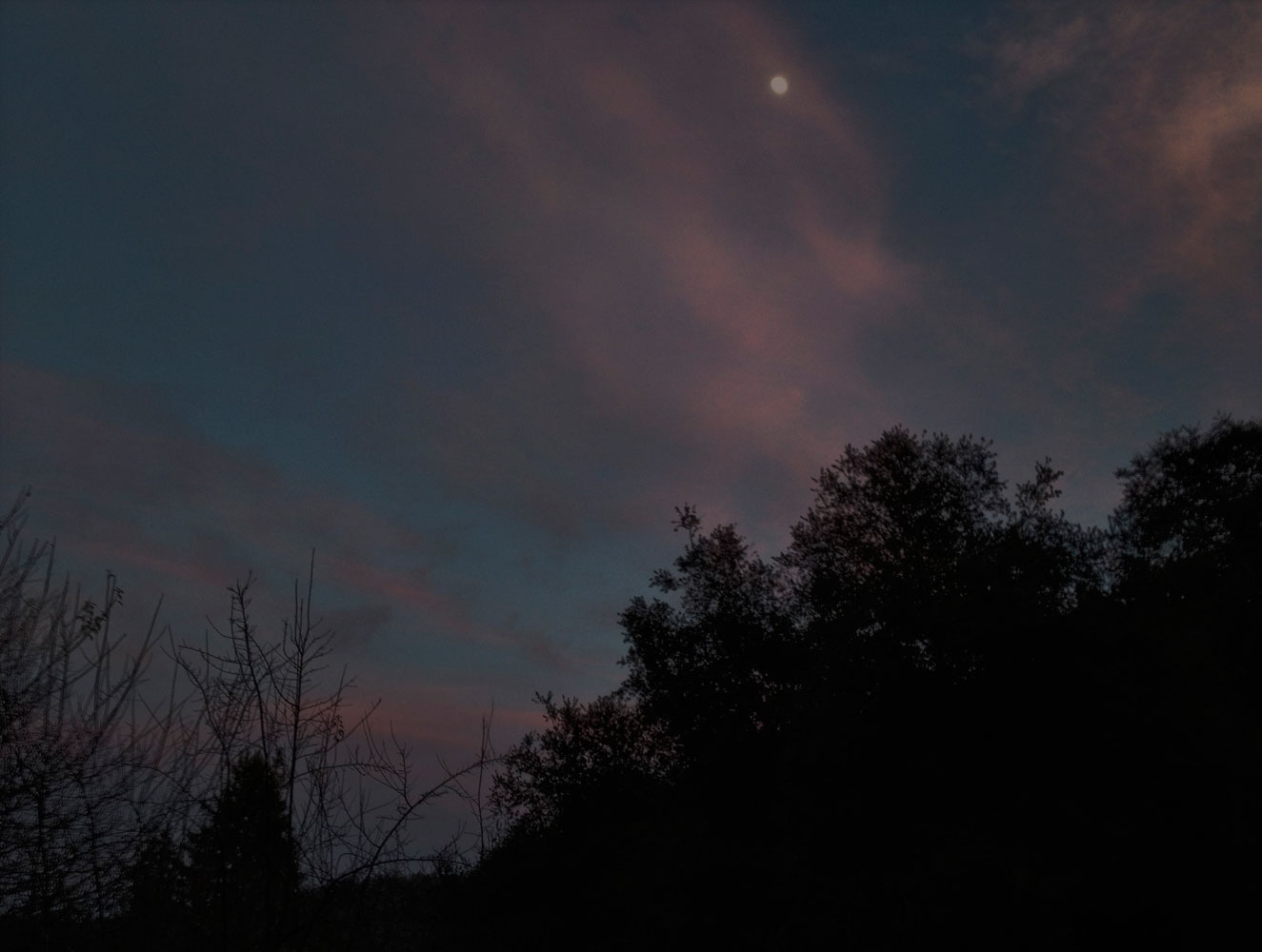
Next I started really playing.
A bit more saturation,
a bit less contrast.
A bit more saturation,
a bit less contrast.
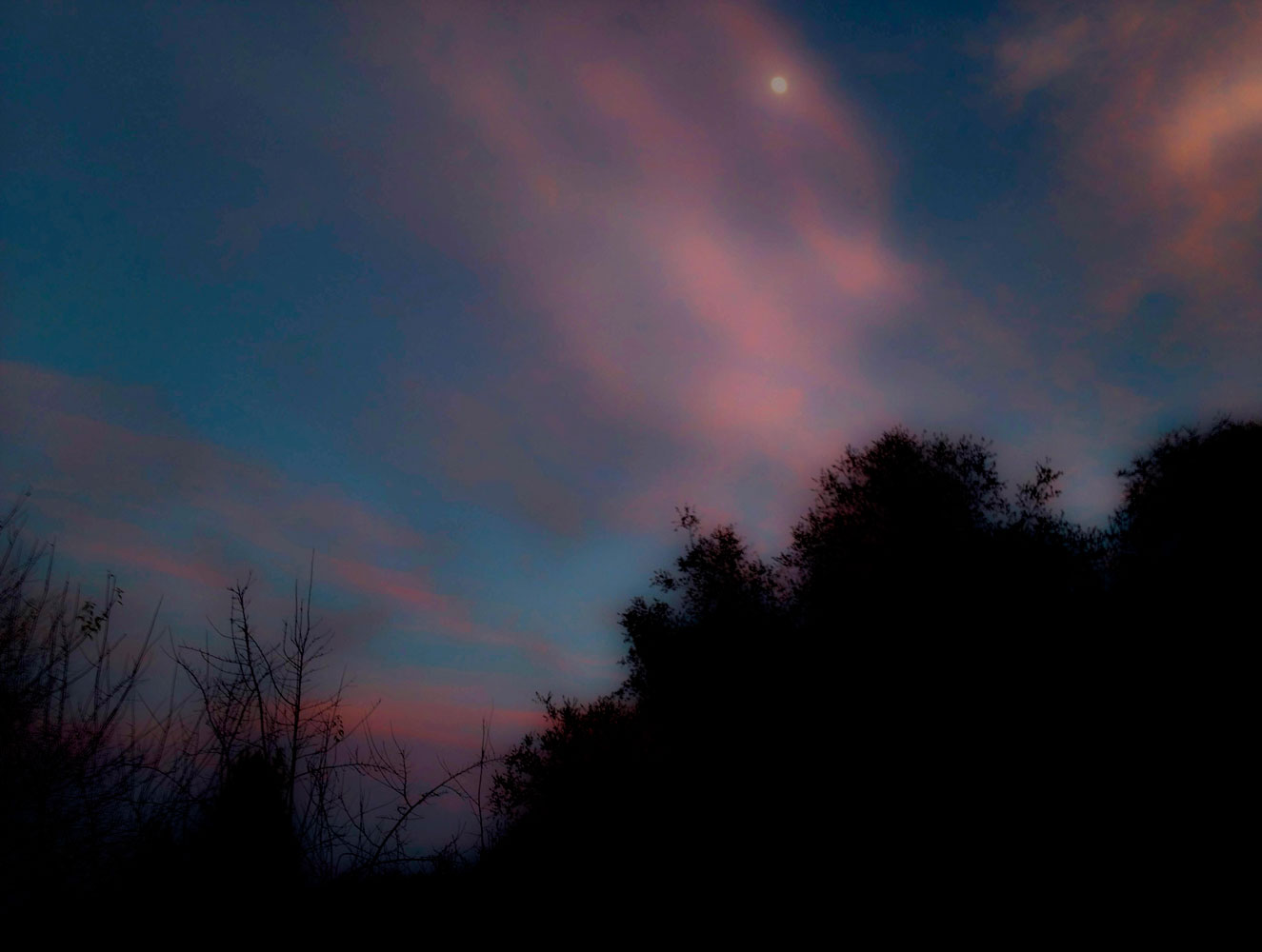
More saturation,
some softening.
It's moving into unreal territory,
but sometimes I like it there.
some softening.
It's moving into unreal territory,
but sometimes I like it there.
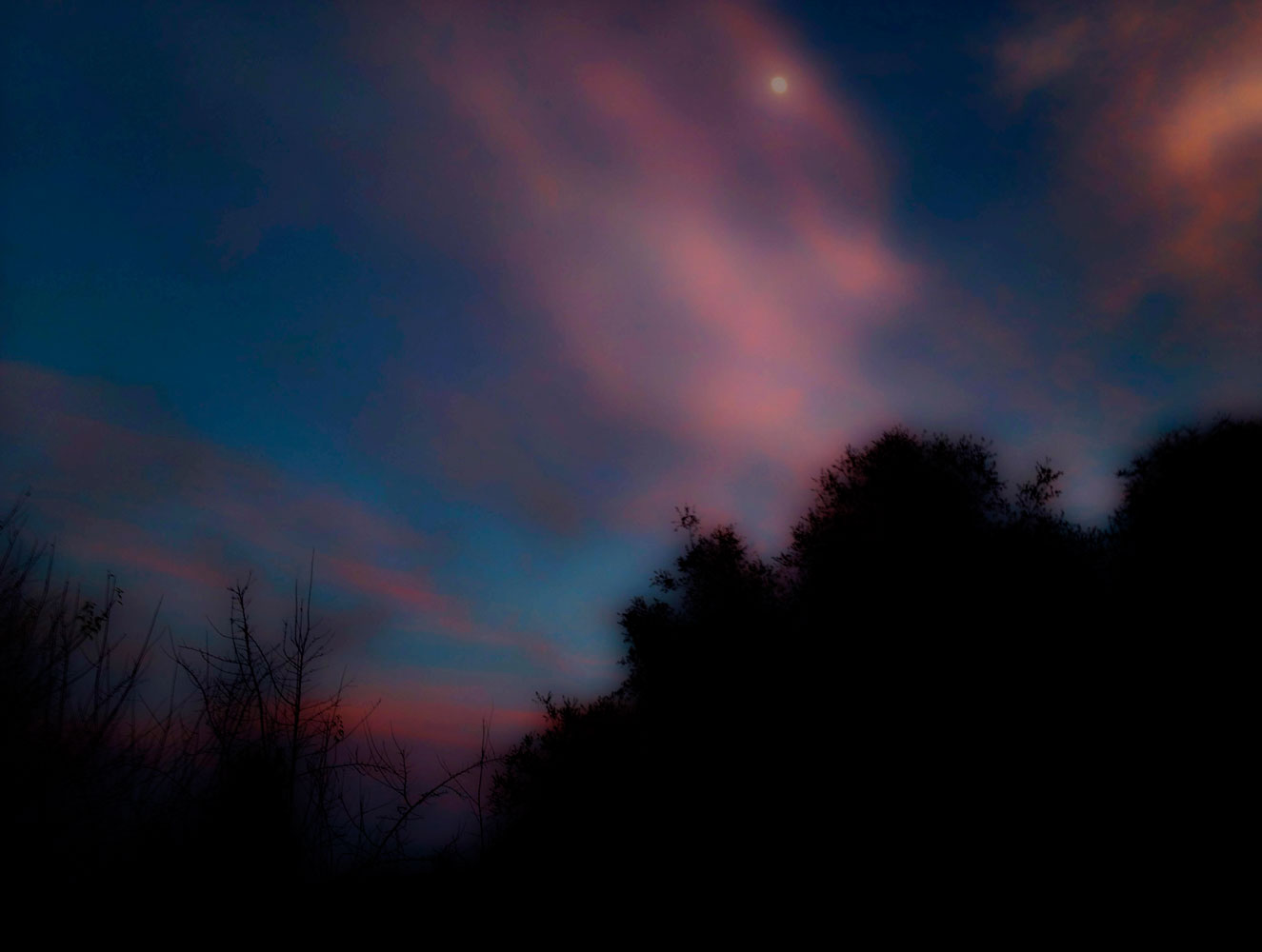
And finally,
completely unreal,
a soft dark dreamy quality.
completely unreal,
a soft dark dreamy quality.
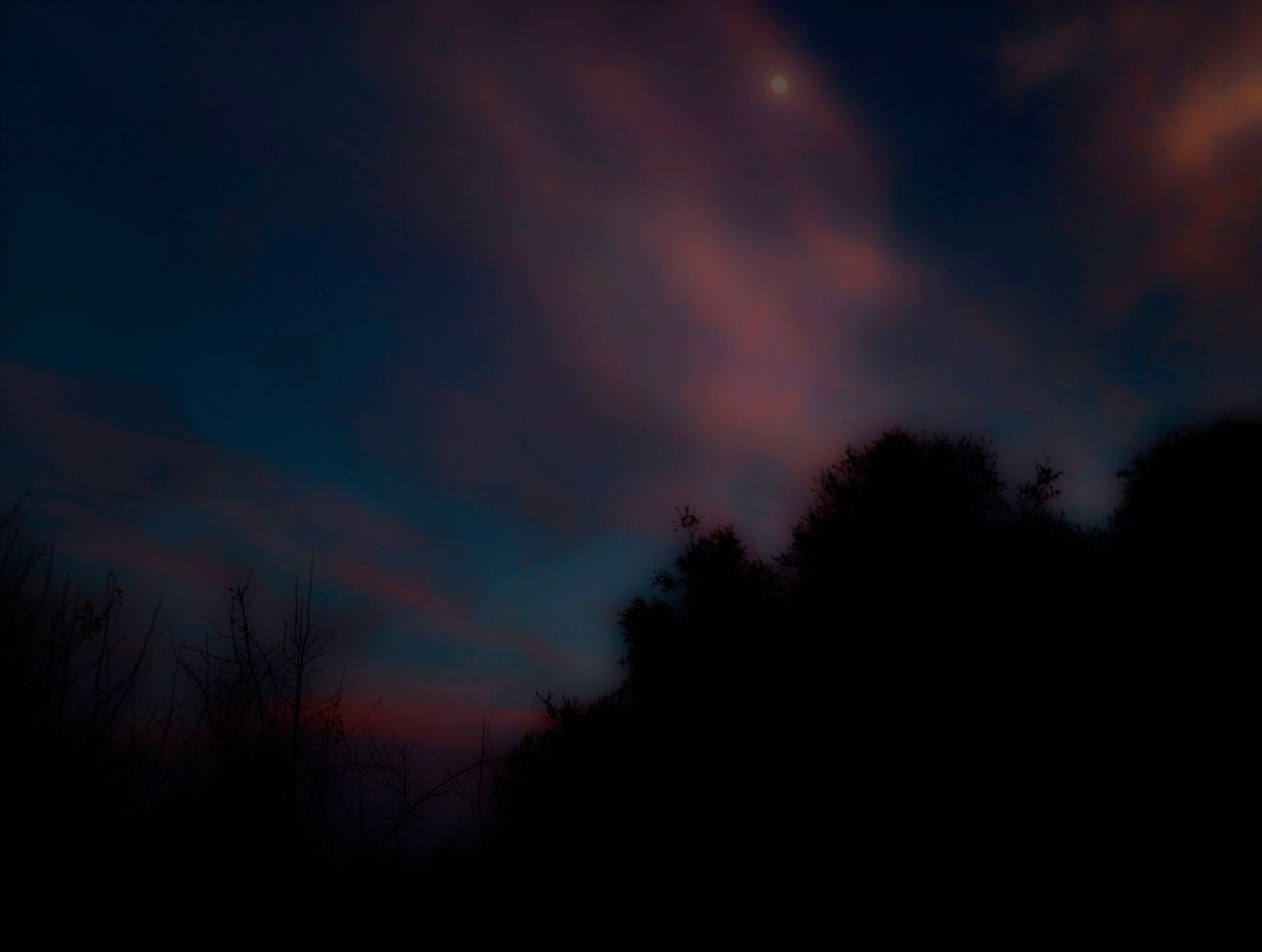
Now take another look
at the original iPhone jpeg.
at the original iPhone jpeg.

The camera saw all of these variations
from this one single washed out photo.
from this one single washed out photo.
Pretty cool, huh?
So if you've never played with your digital photographs,
I encourage you to do so.
Remember,
the camera always sees more
than it shows you at first glance.
So if you've never played with your digital photographs,
I encourage you to do so.
Remember,
the camera always sees more
than it shows you at first glance.
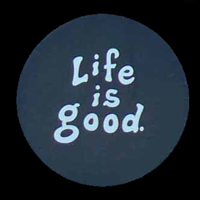
5 comments:
I just got PS Elements 10 but haven't got it put on yet. I've been using 8 on the desktop and 9 on the laptop so I want to migrate to 10 for both computers. I'll get it on in the next few days and see how it works. Love the pink cloudy photo and what you did with it.
You constantly amaze me, Kate, with your insights. Thanks for sharing. It's great information, and fun stuff!
I have loved photography since I was a kid and LOVED taking photos and developing them...never thought photography life could get better. It took a LONG time for me to get into the digital world but once I did...
Manipulating photos in digital is like finding a new treasure inside an already filled treasure chest.
Really enjoy reading your analogies about photography!
It is fun to play with the images. I am often surprised with the results.
BTW, that's not dust, it's velvet.
Those are nice good examples of what editing can do!
Post a Comment